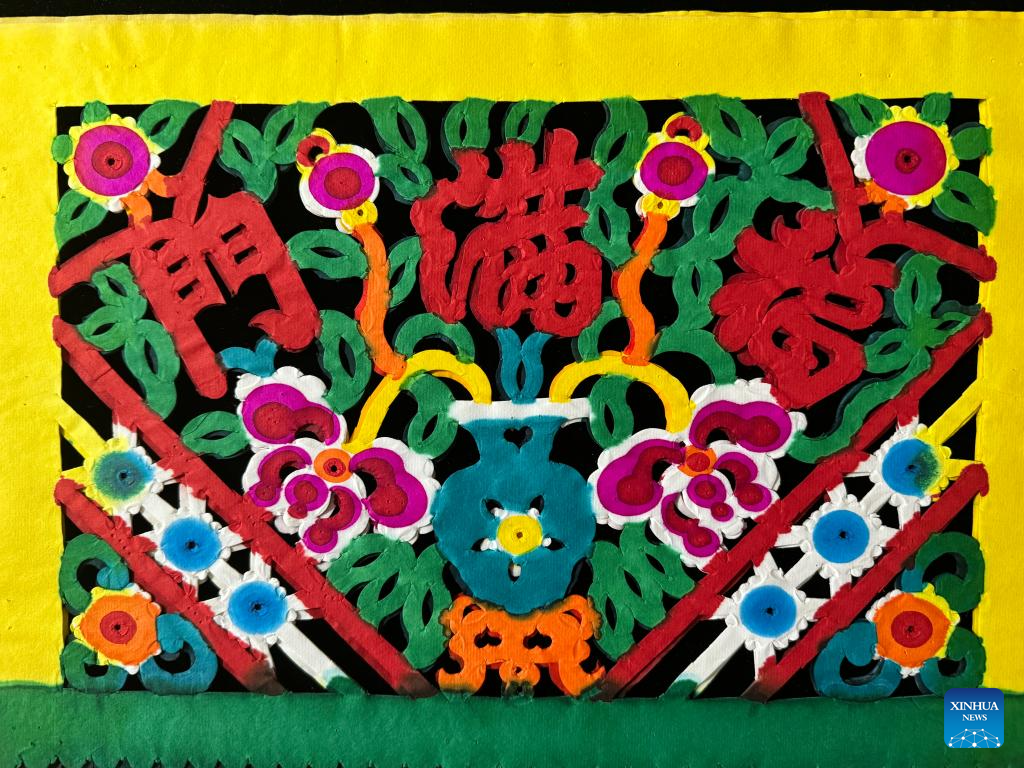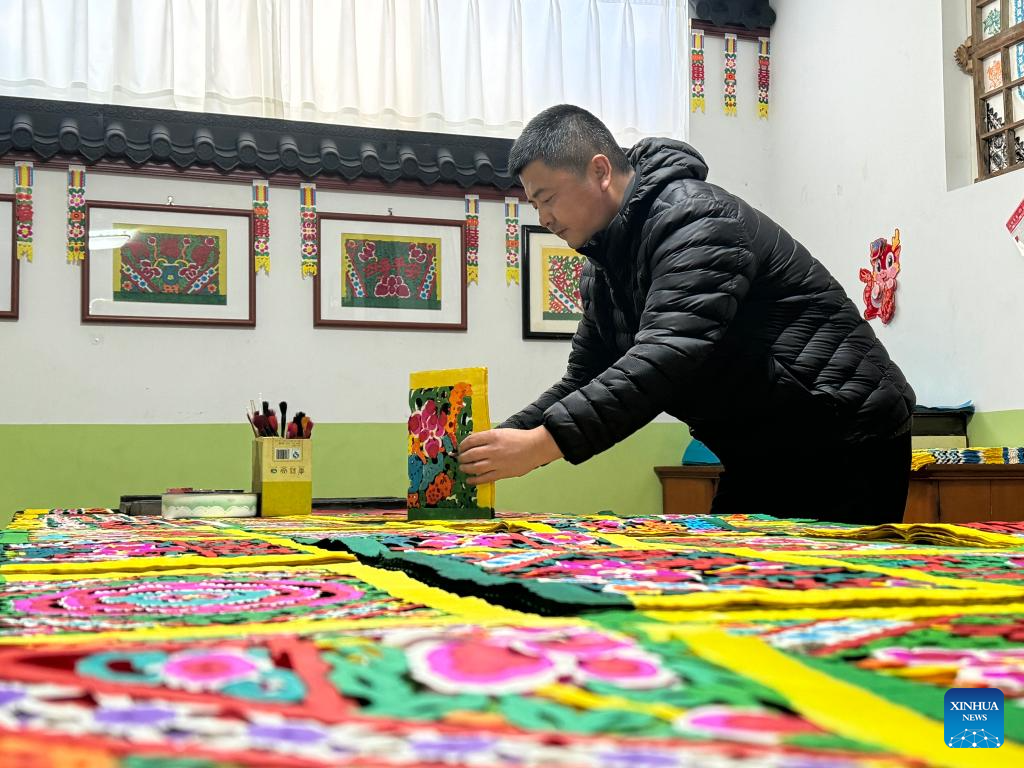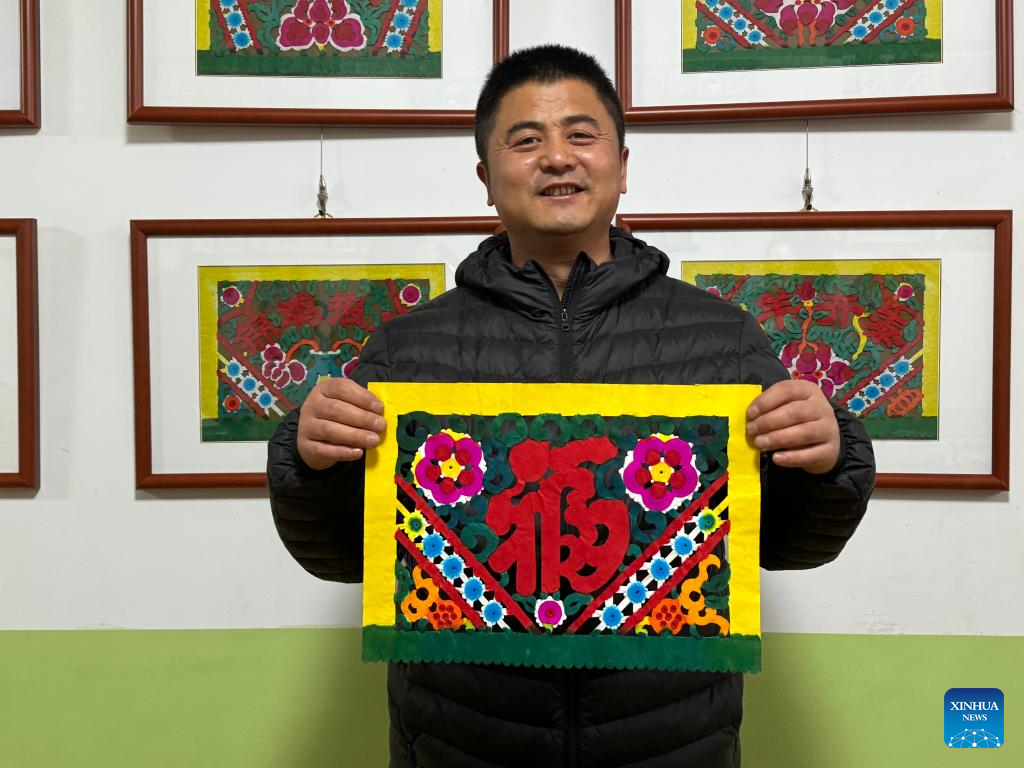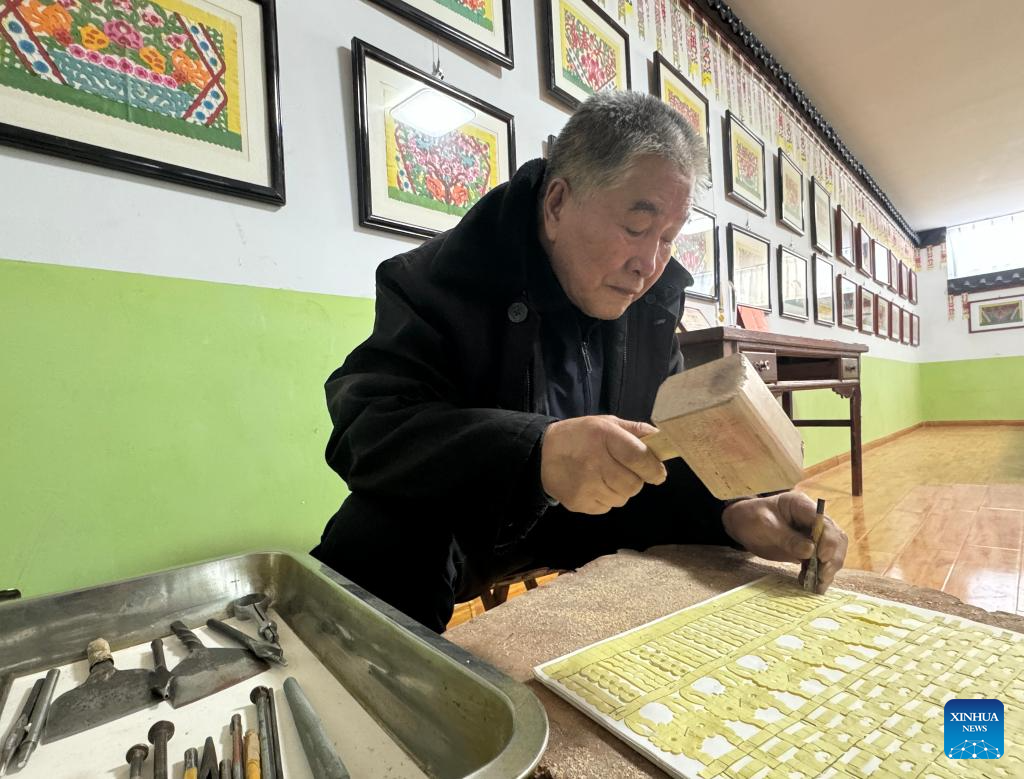
This photo taken on Jan. 31, 2024 shows a "Zhemian," a traditional decoration used during the Spring Festival, made by Liu Shengyu and Liu Bin, in Tongwei County of northwest China's Gansu Province. (Xinhua/Ren Yanxin)
LANZHOU, Feb. 11 (Xinhua) -- Liu Shengyu, 74, meticulously chiseled intricate patterns of hollowed-out flowers, coins, and auspicious words onto a stack of rice paper, accompanied by the gentle brush strokes of his son, who layered vibrant colors onto different shapes of rice paper.
The father and son have combined to complete hundreds of orders for their handmade "Chunye" and "Zhemian" in time for the Spring Festival. "Chunye" and "Zhemian" are decorations used during the Spring Festival in Tongwei County of northwest China's Gansu Province.
"Chunye" traditionally features a trio of interconnected ancient coins in colors of red, yellow, and green, while "Zhemian," which is larger in size, boasts an array of intricate floral patterns such as peonies, lotus flowers, and chrysanthemums.
"On wooden eaves, beams and window frames, these colorful paper handicrafts bloom like flowers, adorning the bleak winter in northwest regions," said Liu, who added that most local families purchase dozens of them to decorate their houses, wishing for prosperity, good health, and bountiful harvests in the coming year.
Back in the 1950s, Liu's father saw making "Chunye" and "Zhemian" not merely as an art form but also as a way to earn a living.
"With not much tillable land in our village, my father had to master a craft to sustain our large family," Liu recalled.
Individual copies of "Chunye" and "Zhemian" cost just a few cents back then. However, Liu's father managed to improve the life of the family thanks to his skills. Each year before the Spring Festival, the family had lots of visitors coming to purchase decorations.
Inspired by his father, Liu Shengyu gradually developed an interest in the craft, and diligently honed his skills to extend his father's legacy.
According to him, making "Chunye" and "Zhemian" is a complicated but exciting process, involving dozens of laborious steps like folding paper, chiseling patterns and dyeing. The complexity of this craft is underlined by the fact that there are over 60 different files to be used for chiseling various patterns.
Decades of manual work have left their marks on Liu's weathered and calloused hands, while the dyeing process, the final and most crucial step, requires great patience.
Each color must be applied meticulously, with excess dye carefully pressed out. To avoid cross-coloring, each layer has to be saturated with one color and become completely dry before artisans can proceed with the next color.
Therefore, although the decorations are only sold at the beginning of the year, Liu and his son have to commence their work as early as May, investing months of painstaking effort into each piece.
"Farmers work hard all year round. Sitting by the fire, eating a bowl of hot noodles while admiring colorful paper cuttings adorning their homes is all that they expect at the end of a year. So we have to honor their expectations with fine works," said Liu.
While inheriting the traditional skills, Liu and his son Liu Bin also strive to innovate, developing new patterns and offering customized designs to meet the diverse needs of their clientele.
"In the process of urbanization, many people have moved into buildings and their livelihoods are improved. The demand for 'Chunye' and 'Zhemian' has waned," said Liu Bin. "But the tradition lasts, serving as the symbol of our shared cultural heritage and emotional ties to the Spring Festival." ■

Liu Bin arranges "Zhemian," a traditional decoration used during the Spring Festival, at home in Tongwei County of northwest China's Gansu Province, Jan. 31, 2024. (Xinhua/Ren Yanxin)

Liu Bin displays a "Zhemian," a traditional decoration used during the Spring Festival, with a Chinese character "Fu (fortune)," in Tongwei County of northwest China's Gansu Province, Jan. 31, 2024. (Xinhua/Ren Yanxin)

Liu Shengyu makes "Chunye," a traditional decoration used during the Spring Festival, in Tongwei County of northwest China's Gansu Province, Jan. 31, 2024. (Xinhua/Ren Yanxin)



